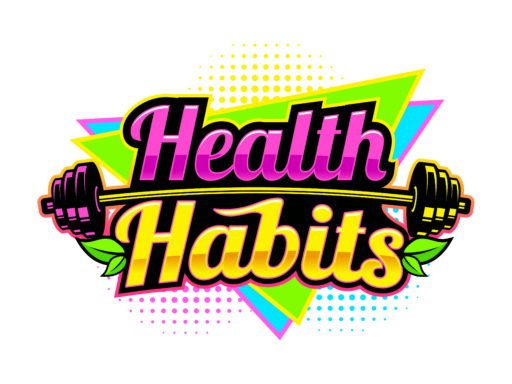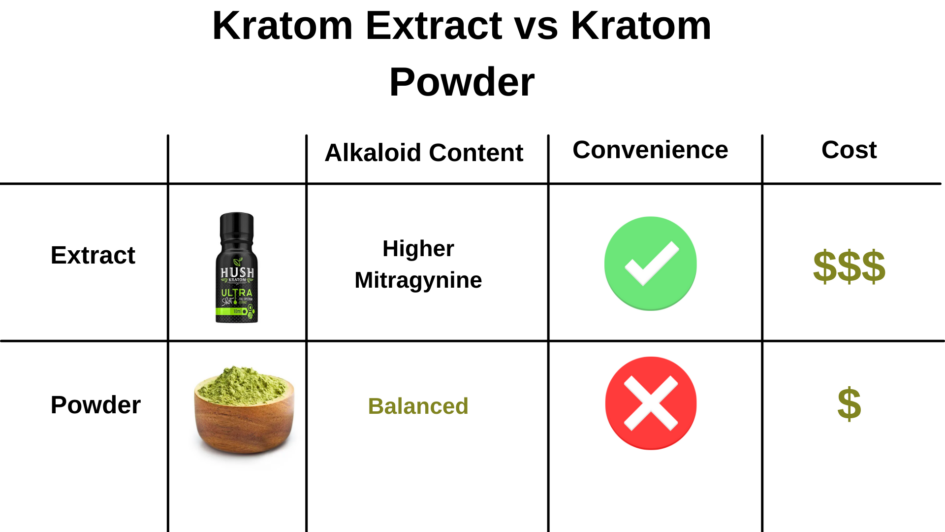Kratom comes from a species of tree from Southeast Asia and is a cousin of the coffee plant.
We’ve written quite a bit about this crushed-up leaf. It’s a controversial substance for a bunch of reasons. One of the main concerns is that the kratom alkaloids attach to the opioid receptors, named because they’re the same receptors that opiates attach to, they have fairly high addictive potential.
However, in the right contexts, doses, and from a trusted source, kratom can support everything from pain relief and sleep, to energy and focus. Right now, the mainstream conversation centers around kratom’s dangers, while ignoring its benefits and failing to recognize it as a complex, nuanced substance. It has risks and benefits just like almost every other supplement and drug.
For a primer on kratom, check out this article on the different kratom strains.
If you use kratom, in any form, make sure you get it from a trustworthy source, and NOT your local gas station. Kratom is unregulated and often of dubious quality. We recommend Viable Kratom.
Kratom doesn’t always come in the same form. After all, it’s from the leaf of a tree, so it stands to reason that there are different ways to get active alkaloids from the leaves into a consumable, packaged product.
The two main ways to do this are through powders or extracts. And they each have their pros and cons.

What Is Kratom Powder?
Kratom powder is the more typical form of kratom. The process for making kratom powder is relatively simple. First, the leaves from the kratom tree are plucked and dried. Depending on how they’re dried, that’s what causes the color shifts and what we call the various strains. White strains are dried in a greenhouse and red strains are dried in the sun.
This drying process can change the alkaloid contents of the kratom and therefore its effects.
After the leaves are dried, they’re crushed up and finely ground into a powder.
So kratom powder, simply, is dried and crushed up kratom leaves.
What is Kratom Extract?
Kratom extract, which you can also purchase from many verified kratom sellers like Viable (and their partner company Hush), is made through a common “extraction” process. I know that’s not very helpful, but it’s a similar process to other extracts, like “green tea extract.”
The idea is to make a more concentrated version of the alkaloids, which is what gives kratom its effects, while getting rid of everything else.
To extract the kratom alkaloids, they boil the leaf or powder in water. This makes a substance like tea. Then they filter out the solids, like the leaf matter, leaving just a liquid. The liquid simmers at a low temp so more of the water evaporates. Some companies use a cold-water extraction process, which they say works because high heat can denature the alkaloids, rendering them ineffective.
At the end of this, you’re left with a concentrated liquid of kratom alkaloids. There are other processes from here that can take place, to make products like kratom oil or all kinds of different kratom extracts.
On a chemical level, nothing changes. As you may remember from high school chemistry, this is a physical change, not a chemical change. The actual molecules don’t morph in the abstraction process.
That said, there are three main differences between kratom powders and extracts, which account for some practical considerations for you to make.
1) Alkaloid Ratio and Dose
When you leave in the alkaloids and take out everything else, you wind up with a much stronger substance.
Now, you might ask if you can just take a smaller dose of the extract, but often you can’t. They come in capsules or shots or different edibles with a fixed dose.
There are liquid options, like Viable’s OPMS product, but now you’re relying on yourself to just put one drop into your beverage, so you probably won’t get the dose exactly right.
Second, most kratom extraction processes focus on extracting mitragynine. This changes the alkaloid percentages. So a kratom extract will mimic a white kratom strain, which has more of a stimulating effect precisely because it has more mitragynine.
So if you want to take kratom before bed to help you sleep, most extracts aren’t your best choice.
There are a few that have a more balanced alkaloid profile…
2) Convenience and Taste
Okay, let’s make one thing clear. Kratom powder doesn’t taste good. It’s a fibrous leaf that’s dried and ground up. At best, it tastes like eating the stem of a random leaf.
Whether you put a little bit in coffee, tea, juice, or a smoothie, it’s going to have that leafy taste to it. One of the most popular options to take kratom is what users call “toss and wash.” You just grab a scoop of powder, throw it in your mouth, and immediately grab some water to swirl it around and wash it down. It’s just not an ideal situation. Also, the aftertaste is rather earthy.
In contrast, at their worst-tasting variations, kratom extracts come in capsules, which you swallow like any other capsule. At its best, the kratom extract is infused into all kinds of sweet concoctions, like gummies and chocolates.
Viable’s caramels, for example, you can drop into your morning coffee for a hint of sweetness.
3) Cost
So extracts are more delicious and more potent. What’s the downside? Well, they’re more expensive. A lot more expensive. For the same dose, extracts are usually 5-10 times more expensive.
You can buy pure powder in bulk for very cheap compared to the extracts. For example, 100 grams of powder costs around $20 at Viable.
Those 100 grams make up around 30 servings of 30-45mg of mitragynine.
A pack of SIX caramels, with 20mg of mitragynine in each one, also costs around 20 bucks.
These are ballpark numbers, but the cost per dose is not even close.
With extracts, you’re paying for convenience. And, there’s a lot to be said for that, but keep that in mind.
Other Differences
There are a few other differences between extracts and powders. Extracts generally will take effect quicker.
Often, extracts can come in more synergistic products, like kratom nootropics, which contain alertness-inducing kratom along with other ingredients to help you focus and perform your best like l-theanine.
There are even products that mix kratom with kava, another interesting substance. However, we’ve written about why this probably isn’t a great idea.
If you’ve read some of our other thoughts on kratom, you know we’re bullish on it. We think its potential use cases deserve a closer look by researchers. However, we’re not blind to the risks. It should be treated more like a drug and less like a traditional supplement. It has shown addictive potential and can be overused.
We’ve been repeating over and over again, the importance of getting your kratom from a safe, trusted, pure source. Gas station kratom is unregulated and dangerous. We recommend Viable Kratom because they have the most transparent manufacturing processes in the industry.
They have powders at competitive prices, and extracts in all kinds of forms, from nootropic shots, to gummies, to chocolates and caramels.


May 11, 2022 at 5:16 pm
I am not feeling the effects of Keaton no longer. The enhanced used to be my go to, but it just isn’t having an effect. The only thing different is that I am on adderral. Have you heard any interactions regarding this combo? Is my body just used to it? I am confused.
June 28, 2022 at 8:54 am
Good question.
We are doing research on this right now, and are writing a full article on kratom and adderall. So we’ll have an in-depth answer for you in a few weeks.
May 11, 2022 at 7:15 pm
I personally like the full spectrum powder i have Osteoporosis my bones are degenerative disease. I like to be active go for walks with my dogs maintain our apartment full spectrum eases the pain and gives the energy i need
Unfortunately im financially stricken at this time so i have to sparingly use it.
June 28, 2022 at 8:53 am
That makes sense. But that’s great that the kratom has helped.